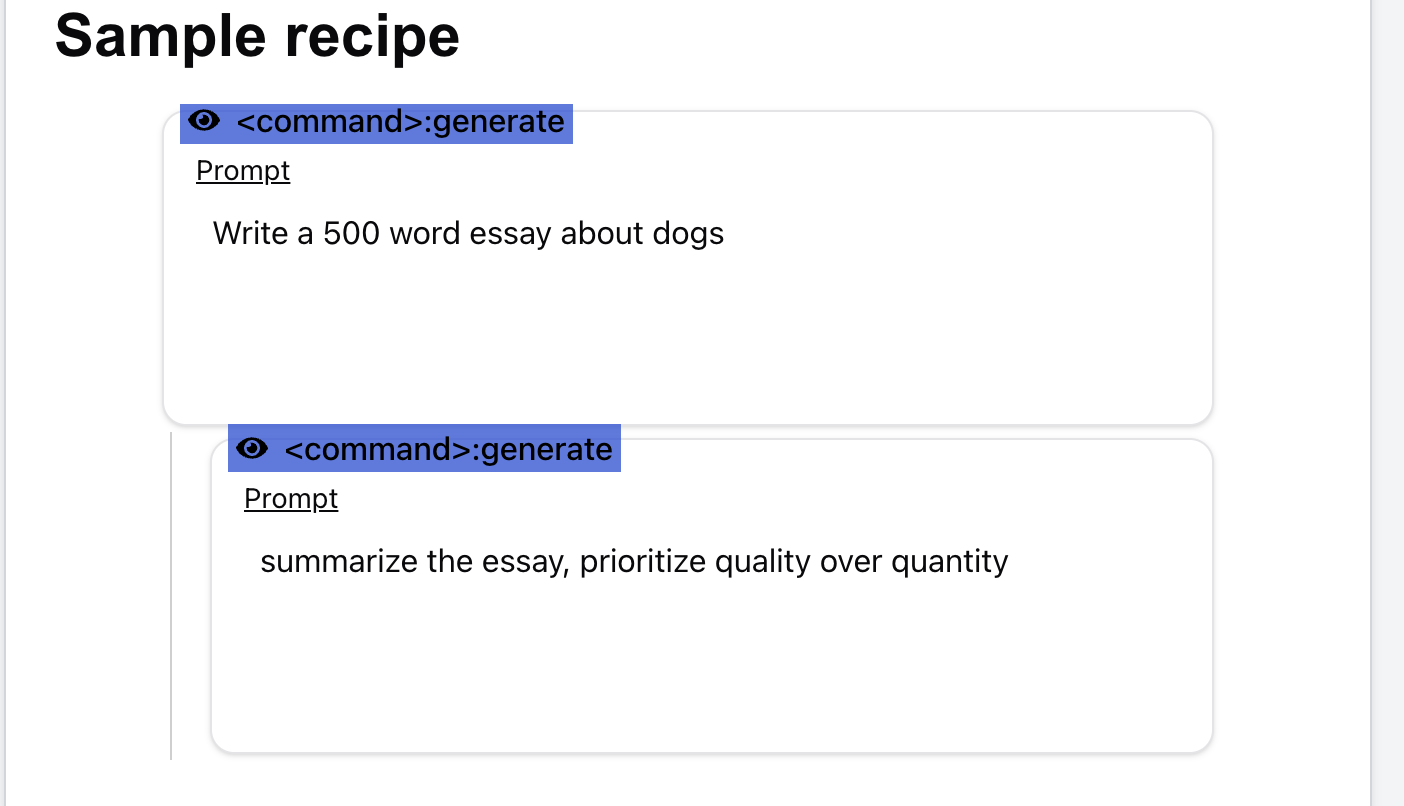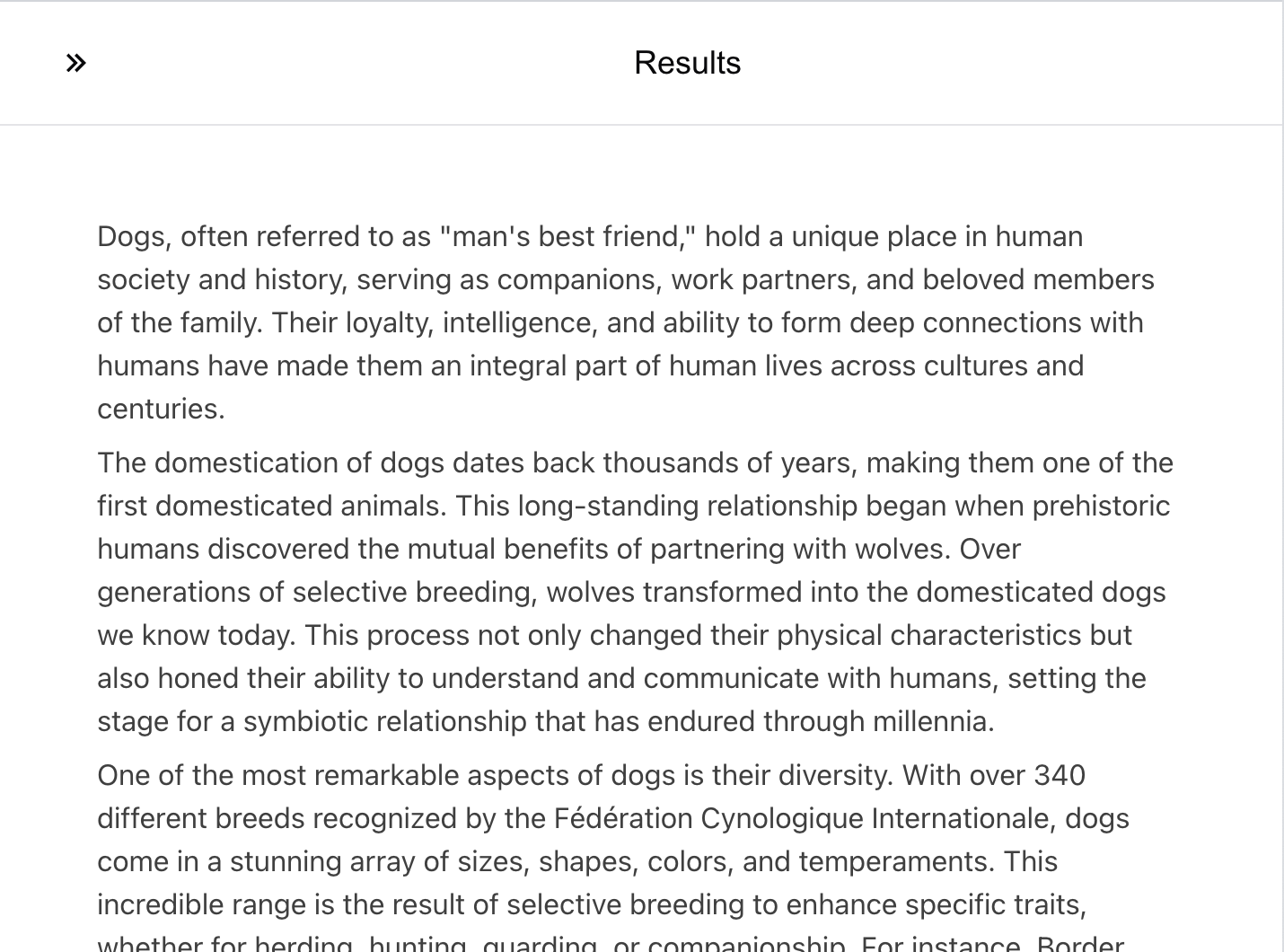Passing
Powerful workflows can be built when multiple macros are put together. Macros follow the “waterfall” rule.
Combining macro rules
Macros are combined using indents. The first macro is considered the start of a “Block”. Every indented macro will use all of the data that has appear thus far in its Block, hence a “waterfall”. For example, consider the following recipe.

For the sake of simplicity, a text description of this recipe looks like the following
<generate macro 1>: write a 500 word essay about dogs
<generate macro 2>: summarize the essay, prioritize quality or quantityThis is a description of how inputs and outputs were handled
-
First we run
<generate macro 1>- inputs: []
- instruction: write a 500 word essay about dogs
- output: “essay from llm”
-
Then we run
<generate macro 2>- inputs: [write a 500 word essay about dogs, “essay from lmm”]
- instruction: summarize the essay, prioritize quality or quantity
- output: “summarized essay”
Note that <generate macro 2> has context of everything that occured in <generate macro 1>. All the inputs and outputs thus far become context for the next macro in the waterfall.
Results
When we run the example recipe, we get the following outputs

500 word essay (generate macro 1 output)

Essay summary (generate macro 2 output)